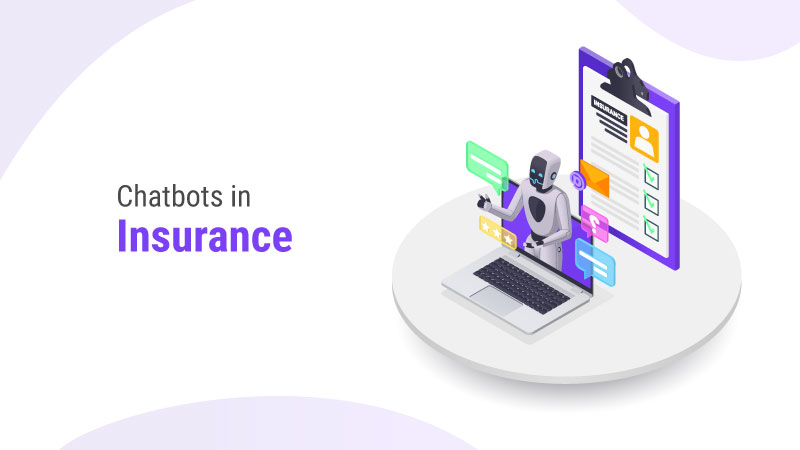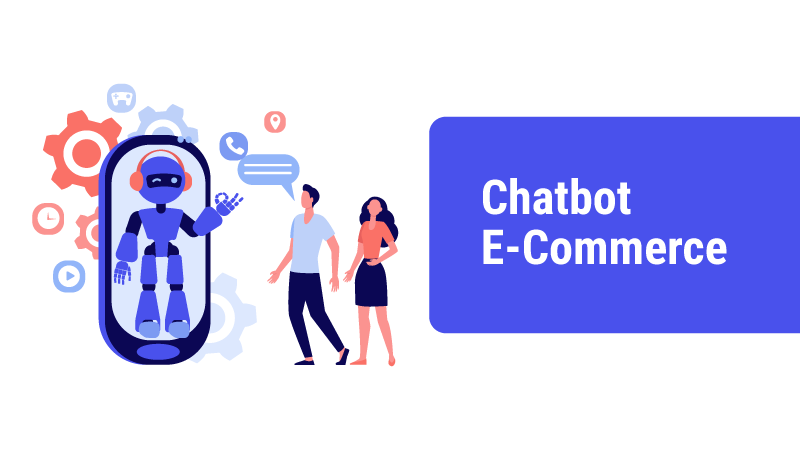Chatbots in Insurance: Use Cases

The insurance industry is mostly identified with heavy paperwork, complexities, and legacy processes. Today, the offers and products provided by an insurance company are not enough to set it apart. Customer experience is the only brand differentiator that should not be ignored and support centers are the solution to meet the changing customer requirements. However, such customer support centers are expensive as well as obsolete because the customers find it difficult to access the support assistants through calls and messages. In addition, large customer service is required for a large number of customer requests, ensuring 24/7, individual interaction across multiple digital channels and different languages. AI chatbots are the best solution to meet these standards of customer experience.
Use Cases of Chatbots in Insurance
Here are some of the major use cases of chatbots in the insurance sector:
Customer support and awareness
Based on the profile and inputs of the customer, the customer service chatbots can create awareness among the customers about the working of the process in multiple carriers, compare, and suggest optimal policy. In order to conduct end-to-end processes without interventions, insurance companies should be ready to assist customers in an interactive and secure manner. Customer service chatbots increase conversions by interacting with all visitors and engaging them on your website or any other channel.
Lead profiling and conversions
Research shows that if a response is not given to a customer’s question within 5 minutes, the chances of it becoming a lead are reduced by 400%. Such situations can be avoided with the presence of an insurance chatbot as it not only increases the lead conversion but also makes the user happy with an immediate response. Moreover, chatbots can provide relevant details to the customers depending on the input and queries they give. This data will help the sales team as it offers a complete context of what an active user is looking for and move forward accordingly.
Claim processing and payment assistance
Chatbots are designed and programmed to resolve issues related to the insurance claims of your customers and to track the existing policies. This will not only encourage the customers to make their upcoming payments but also assist them in making the payment through simple and easy steps across the channel preferred by the customer.
Rich database
A long and growing e-mail contact list is important to every business, and insurance companies are no different from that. Almost all chatbots are built to gather the contact details of the customers with whom the bot interacts. Further, the contact details collected by the chatbot are added to the user database for communication through various mediums.
Reduce workload
Automation mainly aims at reducing the workload, indeed most technological advancements serve the same purpose. With chatbots being installed in the insurance sector, there is a significant reduction in the workload on the sales and marketing team as they avoid the hassle of having to answer each question individually and concentrate on turning the leads into sales.
Pre-sales and sales
According to the studies, almost 53% of customers prefer online purchases if they are given the option to converse with the dealer directly. An insurance chatbot allows you to establish a strong relationship between the customer and the brand. At the same time, it identifies and distinguishes the customers on the basis of their purchase intent.
Personalized customer experience
It is obvious that customers like to engage in real-time interaction rather than emailing. The reason is that people often identify websites as static mediums, so any kind of interaction that takes place in the media provides a better customer experience. Providing excellent deals and advice on insurance claims and quota is the actual merit of obtaining customer statistics. Chatbots can also make an appropriate recommendation by monitoring the behavioral patterns and habits of customers. Additionally, it prompts customers to leave positive reviews and gather their feedback.
Key Features of insurance bot
Many organizations might have installed chatbots but not all of them may not meet the specific standards a chatbot should have. Here are some of the key features of a chatbot:
Transactional
We expect an insurance advisor to give proper assistance in account opening, providing information about the policies and quotas, signing the claims, etc. A virtual assistant is supposed to perform the same functions as an advisor, which can be done by back-office integration of company systems. Such intricate integration cannot be performed by every technology in the market.
Conversational
Virtual assistants should be able to comprehend customer queries in a way a human support assistant would do. They must give a proper response after analyzing the context of the message. Whenever the customer reports a query or an issue, there should not be a reason why a chatbot is unable to comprehend it immediately.
Reliable
Any misinterpretations or transaction errors can lead to loss of customers and negative reviews. The customers should be able to recognize their insurance company as reliable. Providing a seamless customer experience is one way to gain the trust of the customers and to a large extent, conversational AI chatbots serve the purpose.
Multi-channel
It is always better to deploy your chatbots in multiple channels. This gives the customers the opportunity to choose any channel of their preference and convenience – which can be a phone call, WhatsApp message, social media platform, or even a mobile app.
Wrap Up
The ultimate goal of any insurance chatbot is to provide a personalized, native, and interactive experience to the customers. Chatbots can minimize functional costs, increase revenue, promote brand engagement, and improve customer loyalty. However, this is possible only if they naturally interact with customers in a way they prefer. As a result, opting for the right development platform is critical to the success of chatbots in the insurance sector as it has to provide reliable and measurable optimal conversational features.
Blogs by Category
AppForms Artificial Intelligence Blockchain Call Centers Chatbots Cloud Computing Data Management Design Digital Marketing Digital Transformation Enterprise Applications FinTech Insights LowCode Development Microsoft Mobile Apps News Office 365 Robotic Process Automation Security SharePoint Software Development Web ApplicationHow Chatbot Benefits E-Commerce

2024-05-23 16:40:42